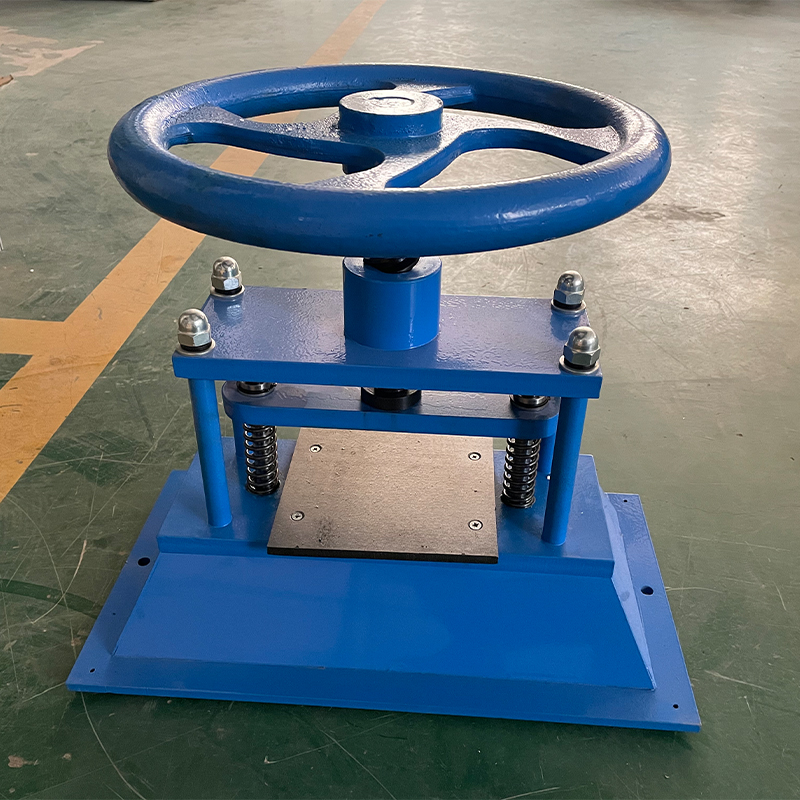Clamps Designed for Enhanced Performance in Tensile Testing Applications
Clamps for Tensile Testers Ensuring Accurate Material Testing
Tensile testing, also known as tension testing, is a critical process in materials science and engineering. It measures a material's response to stretching forces, providing essential data about its strength, ductility, and tensile properties. A vital component of conducting tensile tests is the clamps used to hold the specimen securely. This article will delve into the significance of clamps for tensile testers, their types, and the various factors to consider when selecting the appropriate clamp for specific testing applications.
Importance of Clamps in Tensile Testing
The primary purpose of clamps in tensile testing is to grip the specimen effectively to ensure that the forces applied during the test are transmitted accurately. This is crucial for obtaining reliable results. If the grips slip or do not hold the material firmly, it can lead to erroneous readings and ultimately a flawed understanding of the material properties being evaluated.
A good clamp must maintain a uniform stress distribution across the specimen, eliminating the risk of premature failure at the grip points rather than the material itself. This aspect is critical for achieving accurate and consistent test results, enabling engineers and researchers to evaluate materials appropriately for specific applications.
Types of Clamps
There are several types of clamps used in tensile testers, each designed to accommodate different materials and testing conditions. The most common types include
1. Mechanical Grips These clamps are operated manually and utilize a mechanical mechanism, such as screws or levers, to hold the specimen. Mechanical grips are versatile and can be used for various materials, including metals and composites. However, care must be taken to ensure that the specimen is gripped evenly to prevent stress concentrations.
2. Hydraulic Grips Hydraulic clamps use fluid pressure to secure the specimen. These grips provide a strong holding force and are particularly useful for testing larger or more robust specimens. Hydraulic grips allow for precise control over the gripping force and can adapt to different specimen sizes.
3. Pneumatic Grips Similar to hydraulic grips, pneumatic clamps use air pressure to secure the specimen. They offer quick operation and are generally lighter than hydraulic systems. Pneumatic grips are ideal for high-speed testing applications where rapid specimen loading and unloading are required.
4. Capstan Grips Featuring a rotating drum, capstan grips wrap the specimen around the drum to hold it securely. This type of grip is prevalent in testing flexible materials like fabrics and rubber, as it minimizes the risk of damage while ensuring a strong hold.
clamps for tensile testers

5. Wedge Grips These grips use a wedge-shaped mechanism to ensure a firm hold on the specimen. They are versatile and suitable for a wide range of materials. One of the benefits of wedge grips is that they can accommodate specimens of varying shapes and sizes, making them a popular choice in laboratories.
Factors to Consider When Choosing Clamps
When selecting clamps for tensile testers, several factors must be considered to ensure optimal performance
1. Material Type Different materials have varying properties. For instance, testing metals requires clamps that can withstand high forces, while softer materials may need grips that minimize damage.
2. Specimen Size and Shape The dimensions of the specimen will dictate the type of clamp required. Ensure that the clamps can accommodate the size and geometry of the materials being tested.
3. Testing Environment Factors such as temperature, humidity, and the presence of corrosive substances can affect the choice of clamps. Materials must be durable enough to withstand the testing conditions.
4. Desired Accuracy The precision of the tensile test significantly depends on the clamp's ability to hold the specimen without introducing additional stress or causing slippage. Selecting high-quality clamps can enhance the reliability of the results obtained.
5. Cost and Maintenance Consideration of the budget is important when selecting clamps. Additionally, some clamps may require more maintenance and care than others, impacting long-term operational costs.
Conclusion
Clamps for tensile testers play a pivotal role in ensuring accurate material testing. By understanding the types of grips available and the factors that influence the selection process, engineers and researchers can choose the most suitable clamps for their specific testing needs. Proper clamp selection not only enhances the reliability of test results but also contributes to safer and more effective material evaluations. As the demand for high-quality materials continues to rise, the importance of robust and reliable clamps in tensile testing cannot be overstated.
-
The Role of Tensile Force Testers in Quality Control and Material Science
NewsAug.01,2025
-
Maintenance and Safety Tips for Aging Ovens
NewsAug.01,2025
-
Density Balance in Forensic Science
NewsAug.01,2025
-
Advanced Optical Measurement Technologies
NewsAug.01,2025
-
A Buyer’s Guide to Tensile Test Machines
NewsAug.01,2025
-
Why the Conductor Resistance Constant Temperature Measurement Machine Redefines Precision
NewsJun.20,2025
 Copyright © 2025 Hebei Fangyuan Instrument & Equipment Co.,Ltd. All Rights Reserved. Sitemap | Privacy Policy
Copyright © 2025 Hebei Fangyuan Instrument & Equipment Co.,Ltd. All Rights Reserved. Sitemap | Privacy Policy
